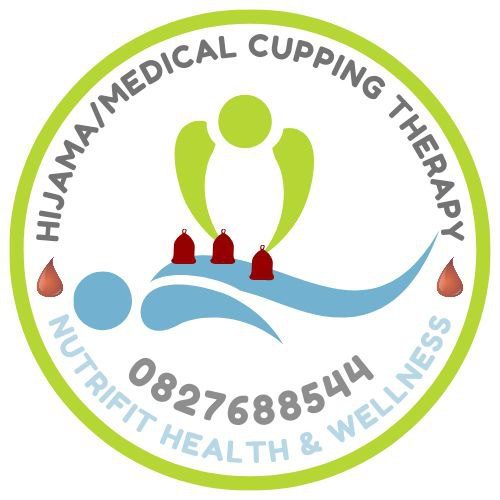FAQ
What is cupping therapy and how does it work ?
Cupping Therapy is an ancient method of Holistic healing using special suction cups. A practically painless procedure, with immense medical healing benefits. Suction cups are placed on specific points on the body for a prescribed time, drawing the deoxygenated blood and toxins to the surface of the skin. The cups are then removed and surface level lacerations are made on the skin using a surgical blade or lancet. (This is a painless process). The cups are replaced for a prescribed time, drawing the deoxygenated blood and toxins out of the body and into the cup. The cups are removed and the surface area is cleaned up. The blood is disposed off into bio-hazardous medical waste.
Is Cupping Therapy painful ?
No, cupping therapy is not considered painful when performed correctly by a trained professional.
Most clients describe the sensation as a gentle pulling or suction on the skin, rather than pain. To put it into perspective on a comfort scale from 1 to 10 (1 = no discomfort, 10 = extreme pain), cupping generally falls between 1 and 3.
- 1–2: A light suction that feels relaxing and soothing, similar to a deep tissue massage.
- 3: Mild tightness or pressure that may feel unusual at first but quickly becomes comfortable.
In some cases, people may notice temporary skin discoloration (the circular marks), which is a normal response to increased blood flow, not a sign of pain or injury.
Overall, cupping is best described as therapeutic, not painful, and many clients even find it deeply relaxing.
How long does the marks last ?
The cupping marks (those circular discolorations) are completely normal and harmless. They are not bruises, but rather the result of increased blood flow and release of stagnation in the tissues.
On average:
- Light marks: fade within 2–4 days
- Moderate marks: fade within 5–7 days
- Darker marks (if there was more tension or stagnation): may last up to 10–14 days
The duration varies depending on factors like your skin type, circulation, hydration levels, and how often you receive cupping. With regular sessions, marks usually fade faster because the body adapts and circulation improves.
Is Cupping safe for diabetic patients ?
Yes — cupping therapy can be safe for people with diabetes when performed by a trained professional. At our practice, we take extra care to ensure your comfort and safety.
What you should know:
- We use gentle suction to protect sensitive skin.
- Healing time may be slightly longer, so marks can last a bit more than a week.
- We always avoid areas with open wounds, ulcers, or reduced sensation.
Cupping may even support circulation, which can be beneficial. However, we recommend that diabetic clients consult their doctor before starting therapy, especially if they use blood-thinning medication or have advanced complications.
✨ Your safety and well-being are our top priority.
Is Cupping Therapy Safe for High Blood Pressure?
Yes — cupping therapy can be safe for people with high blood pressure when carried out by a trained practitioner. In fact, many clients find it relaxing and stress-reducing, which may support overall well-being.
Important considerations:
- We use gentle suction and avoid excessive intensity.
- Cupping may promote relaxation, which can help ease stress-related tension.
- Clients with severe or uncontrolled high blood pressure should consult their doctor before beginning cupping therapy.
✨ Our priority is to provide a safe, comfortable experience tailored to your health needs.
Is Cupping Therapy Safe for Low Blood Pressure?
Yes — cupping therapy can be safe for people with low blood pressure when done carefully by a trained practitioner. Many clients even find the treatment relaxing and restorative.
Things to keep in mind:
- Some people with low blood pressure may feel lightheaded after a session, especially if they stand up too quickly.
- We recommend drinking water before and after treatment and allowing a few minutes to rest before leaving.
- If you experience frequent dizziness or fainting, consult your doctor before starting cupping therapy.
✨ Our approach is always gentle, safe, and customized to each client’s health needs.
How Should I Prepare for a Cupping Session?
Preparing for your cupping session helps ensure a safe, comfortable, and effective experience.
Here’s what you can do:
- Stay hydrated: Drink water before your session to help your body respond better to the treatment.
- Avoid meals: Try not to eat a meal 2 hours before a cupping session.
- Avoid Smoking 2 hours before a cupping session.
- Wear comfortable clothing: Loose-fitting clothes make it easier to access treatment areas.
- Clean skin: Make sure the areas to be cupped are clean and free from oils or lotions.
- Communicate health concerns: Let your practitioner know about any medical conditions, medications, or recent injuries.
✨ Following these simple steps ensures your session is safe, relaxing, and effective.
Is Cupping Safe for Children or Elderly Clients?
Yes! Cupping therapy can be safe for children and elderly clients when done by a trained professional. We always adjust the treatment to be gentle and comfortable for each age group.
Here’s what we do:
- For children: Light suction and shorter sessions, with a parent or guardian present.
- For elderly clients: Gentler suction and shorter sessions to protect delicate skin.
- Health considerations: We review any medical conditions beforehand to ensure safety.
✨ With these precautions, cupping is a safe, relaxing, and effective therapy for people of all ages.
